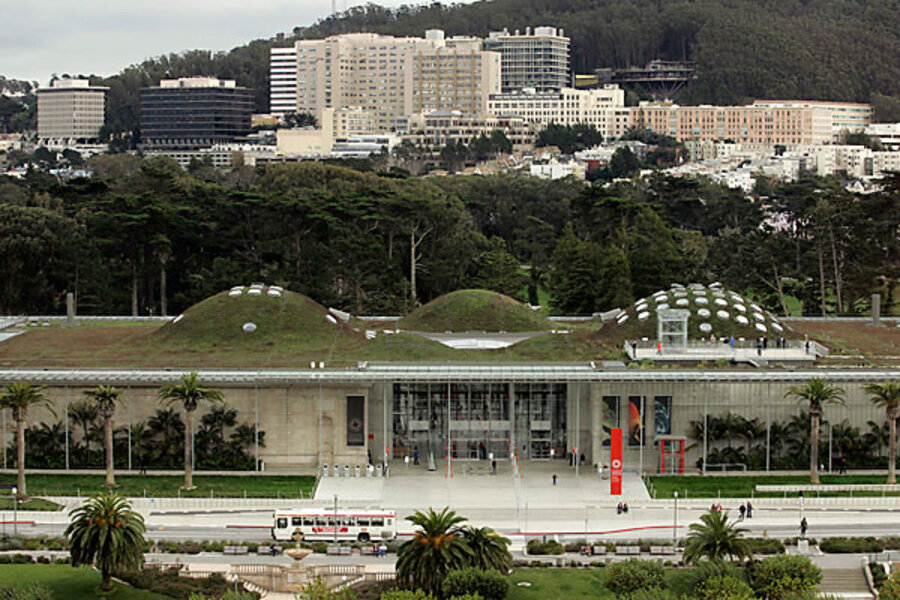California adopts first statewide green building code
Loading...
| Los Angeles
California continues to take the national lead in environmental protection. The California Building Standards Commission voted unanimously this week to approve the first statewide green building code.
Taking effect January 2011, the nation's first mandatory green building code – dubbed “CalGreen” – lays out specific constraints for newly constructed buildings. It requires builders to install plumbing that cuts indoor water use by as much as 20 percent, to divert 50 percent of construction waste from landfills to recycling, and to use low-pollutant paints, carpets, and floors. It also mandates inspection of energy systems to ensure that heaters, air conditioners, and other mechanical equipment are working efficiently. And for non-residential buildings, it requires the installation of water meters for different uses.
The code also allows local jurisdictions, from San Francisco to Los Angeles, to retain stricter green building standards, if they already exist, or to adopt stricter versions of the state code if they choose. It's the first state in the nation to mandate a green building code.
Environmental and green building groups largely welcomed the new code, though they took issue with certain aspects of it.
“We applaud the state of California for being the first state in the country to raise the floor on acceptable, green building standards,” said Jason Hartke, vice president of national policy for the US Green Building Council, a Washington D.C.-based nonprofit. He adds that the statewide standards adopted will “significantly save water and energy, improve indoor air quality, and create jobs at the same time.”
Buildings represent 40 percent of all carbon emissions and over 70 percent of electricity use, Mr. Hartke notes, and the new standards thus would help California meet emissions targets under its new global warming law.
Meeting new emissions targets
The law, AB32, requires the California Air Resources Board to develop regulations and market mechanisms to ultimately reduce California's greenhouse-gas emissions by 25 percent by 2020. Mandatory caps for significant sources of emissions will begin in 2012.
The new code's mandatory measures will help reduce greenhouse-gas emissions by 3 million metric tons by 2020, according to David Walls, executive director of the state building commission. That gives plenty of time for builders and manufacturers to transition to the new code, he says, and doesn’t even take into account emissions savings that might accrue voluntarily.
“This is going to change the whole way that buildings are conceived and constructed by incorporating green practices into our everyday building code,” Mr. Walls said. “Other states will be looking at what we’ve done to try to mimic what we’re doing.”
Rating system criticized
Some environmental groups including the Sierra Club and the National Resources Defense Council were critical of the two-tier “Calgreen" voluntary rating system suggested by the new code. That would clash with the "LEED" rating system, a voluntary green building label widely used nationwide, and cause confusion among builders, they said.
Moreover, a two-tier labeling system would be open to conflicting interpretations and thus be unenforceable by local building inspectors, they argued. More than 200 architects, engineers, and builders have also e-mailed Schwarzenegger to protest the label.
At least one major business group has welcomed the move for a single standard across the whole state, however.
“CalGreen will define what a green building is – something that is not clear right now,” said Matthew Hargrove, senior vice president of government affairs at the California Business Properties Association.
“Having a clear statewide standard will help our companies avoid unnecessary environmental lawsuits,” he said, adding that more consistent standards across the state “means we won’t have to deal with a different code in every jurisdiction, and will allow us to meet some of the statewide regulatory mandates heading our way.”
---
Follow us on Twitter.





